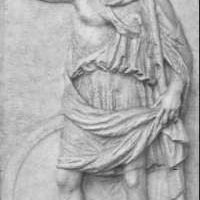Extraordinarii were soldiers for special tasks, part of auxiliów – Roman allies. During the republic, they were mostly Italics.
It is not clear when this division really started to form. Franz Fröhlich in his work (“Die Gardetruppen der Römischen Republik und der Kaiserzeit”) speculates that it may have been created immediately after the Latin War, i.e. in 338 BCE Titus Livy in turn, mentions delectae cohortes (“selected cohorts”) Socii (autonomous tribes and city-states on the Apennine peninsula), which were to be established in 310 BCE. This is the earliest information about this ward. Livy mentions delectae cohortes also describing the campaign that led to the Battle of Sentinum (295 BCE). The author mentions the role of the detachment that was supposed to protect the Roman army encampment. This formation was probably withdrawn as a result of Marius’ reform in 107 BCE. Then the division between the legions of Roman citizens and alae (allied forces) was abolished.
Everything seems to indicate that extraordinarii in the republic was the equivalent of later – antensignani. Lightly armed, they completed missions that required speed and mobility. In the times of the empire, they were selected soldiers and not everyone could be one of them. We obtain a lot of information about the operation of this unit in the work of Vegetius’s Epitoma rei militaris. Although Vegetius wrote his book in 390 CE, little has changed in the operation of the individual. It is amazing that modern armies are modelled on this unit. Especially when it comes to commandos.
Most of the details we know about this unit come from the work of the Greek, Polybius “The History”. A typical consular army of the republic period consisted of two legions and a comparable number of soldiers from Italian allies referred to as alae. In theory, alae could reach a similar number to legionaries, except for the cavalry, which was doubled. By default, they alae reached 1,800 horsemen and 8,400 infantry. In practice, however, there was usually more allied infantry than the Romans themselves. For example, in the Battle of Trebia (218 BCE), four Roman legions of 15,000 soldiers were supported by 20,000 Allied infantry. Similar disproportions can be found in many battles of this era.







